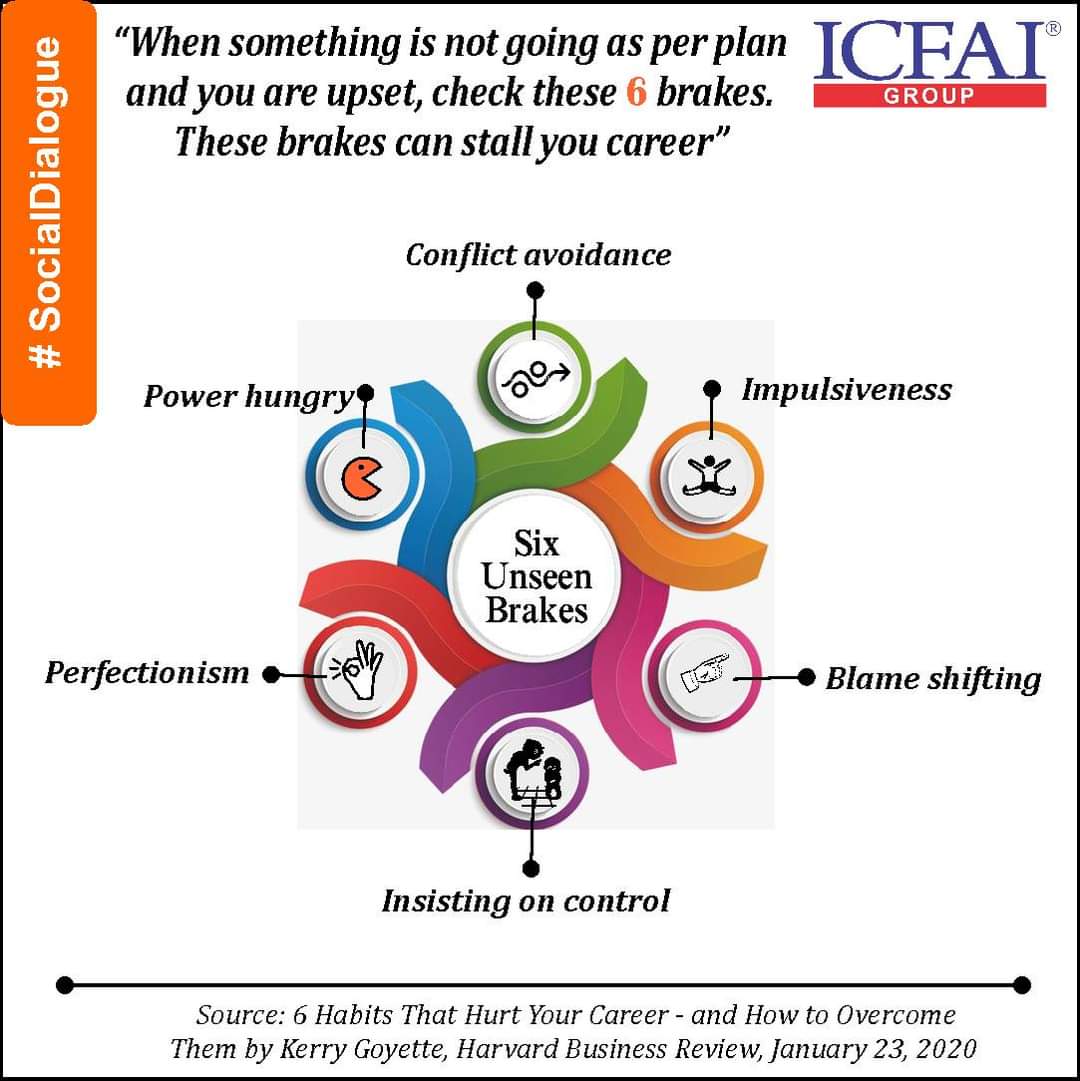
An evening with Mr. Dhruba Mukherjee
On Friday, August 19, we had a highly insightful session by Mr. Dhruba Mukherjee, CEO of the Ananda Bazar Group. Mr. Mukherjee spoke about brands, what makes them succeed, how they can sustain themselves and why they fail.
The session was very ably moderated by our Prof R Prasad and Prof Sudhakar Rao.
About Mr Dhruba Mukherjee
Mr. Dhruba Mukherjee joined ABP as a management trainee in 1997 and currently is the Chief Executive Officer of the organization. During his illustrious career in ABP, he has handled responsibilities in brand management, audience development, advertisement sales and production functions.
Born and brought up in Calcutta and a diehard Calcuttan at heart, Mr Mukherjee is a B.Com (Hons) from St. Xavier’s College, Calcutta; MBA from IISW&BM under Calcutta University and an alumnus of London School of Economics & Political Science. He has also completed the Senior Executive Leadership Program of the Harvard Business School. Travel, food and sports are some of the things that excite him beyond his work.
Life of a brand
Mr Mukherjee began by pointing out that there were only 60 companies in the Fortune 500 list in both 1955 and 2017.
A McKinsey study found that only 160 out of 1008 companies were still in operation after 4 decades.
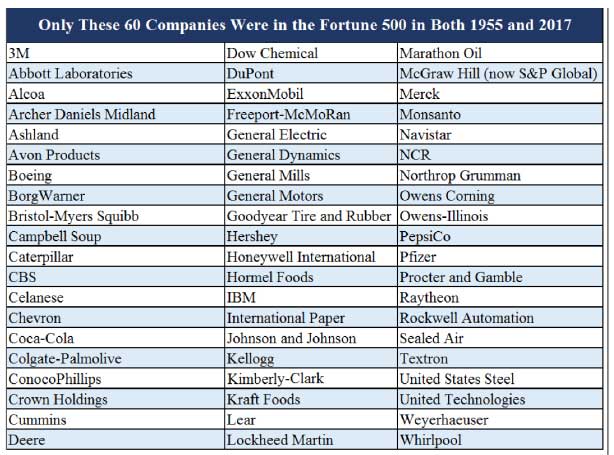
In India, we just have 36 companies that are more than 100 years old.
During the period 1981-2011, only 45% of new registered firms survived in India after 20 years.
All this goes to show that to sustain a brand over a long period of time is not easy.
Keller’s brand equity model
Mr Mukherjee then briefly explained Keller’s brand equity model.
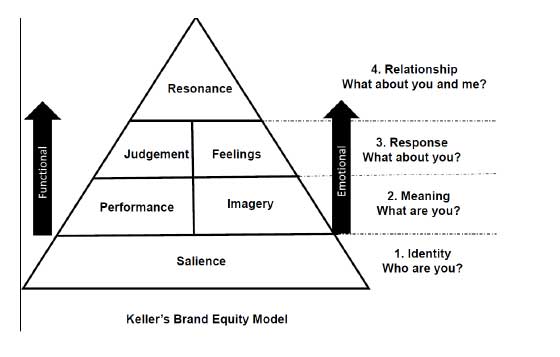
Consumer experience
Consumer experience is driven by the mix of Purpose, Technology and Product/Content.
Speed bumps
As the journey continues, speed bumps come up. Mr Mukherjee spoke about three of them.
Staying relevant: We often overlook this. Customers may have moved ahead. The ecosystem might have changed. In case of ABP, there was a need to look beyond print to television and digital.
Aversion to change: Companies often think that what has worked in the past is a winning formula. Customers have accepted them the way they are. They think that change will not affect them.
Inability to see the warning signs: Success can make brands myopic. They do not visualize the long-term trends. They think everything is hunky dory and do not look at the right data to understand where change is needed.
Red Flag Identification Matrix
Mr Mukherjee explained with the help of an elegant 2X2 matrix how red flags can be identified. The zone to be avoided is where the market is declining, and the brand’s revenues are also declining. If the brand is in the yellow zone, the aim should be to take it to the red zone.
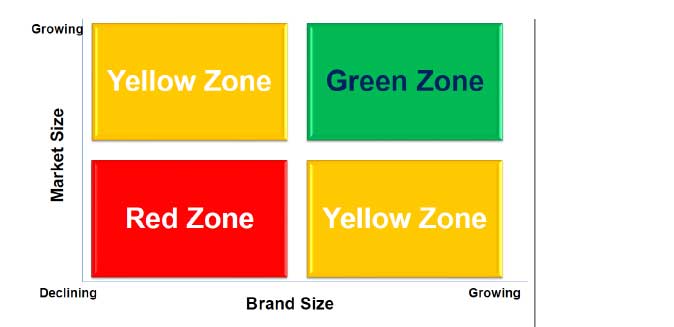
Ambidexterity
Companies should be multi skilled. They should be good at exploiting the success of the existing brand. At the same time, they must explore adjacencies by leveraging capabilities.
Today’s VUCA environment calls for a judicious combination of Exploration and Exploitation.
Mr Mukherjee used the three horizons model in this context:
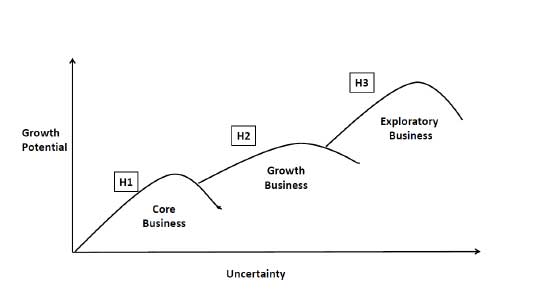
By using this framework, companies can build a balanced portfolio of businesses, some early in the lifecycle, others in the growth phase and some others which are mature. Mr Mukherjee explained how exploration and exploitation will vary with along the lifecycle using the following slide:
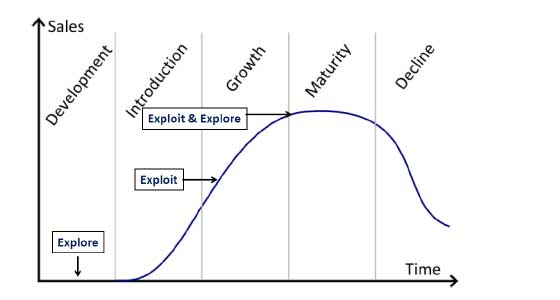
Media Platform Challenge
It is wrong to view ABP as being in newspapers or television. It is in the business of content. So, success lies in finding connections among different types of content and reformatting and repackaging them in various ways. Once we see the connections, the opportunities begin to explode.
As ABP set about transforming itself it defined the purpose as:
Create a digital experience of content excellence in Bengali language that will epitomize the cultural pride of every Bengali across the globe through aggregation of all existing content platforms from the ABP Group and curation of new, niche and archival content.
The ABP Group realized it had played an iconic role in evolving Bengaliness over the decades. The brand had an enviable repertoire of rich content in various formats:
- Printed content from Anandabazar Patrika and Bengali Magazines
- Literary Books of Ananda Publishers
- News Video content from ABP Ananda(TV)
- Entertainment Audio content from Friends 91.9 FM
Unlike a new entrant, the cost to launch this concept was low for ABP. The group created a digital app of content in Bengali that epitomizes the cultural pride of Bengalis. The app is called Happiness unbound: Everything a Bengali cares for.
There was internal push back to this idea. Some businesses argued that there would be cannibalization. But Mr Mukherjee went ahead. As he put it, if we do not disrupt ourselves, someone else will disrupt us.
Life of a brand: A few take aways
- Mr Mukherjee summed up the key points of his presentation:
- Build relevance
- Exploit brand scope
- Create network effects by leveraging Amazon, Google News, etc.
- Disrupt yourself before someone else will
- Explore adjacencies
- Stay true to your Purpose
Q&A Session
Building a personal brand
We often do not think of ourselves in terms of brands. But there are many parallels. Just like brands, we must prove ourselves and sustain ourselves by staying relevant through upskilling and reskilling.
Mr Mukherjee has had a linear career in that he has been with one employer throughout his life. When he started off with ABP as a management trainee, his “opening balance” consisted of academic knowledge. Mr Mukherjee went through a process of learning and unlearning. Each year he would check whether the closing balance exceeded the opening balance. As a management trainee, Mr Mukherjee’s focus was on getting confirmed by showing he could add value. Starting with “Who am I?” it later became: “What can I do?”
As he moved to the middle rungs of management, Mr Mukherjee’s focus was on staying relevant as new technologies appeared. He even took a sabbatical and went to the London School of Economics to upgrade his skills.
After moving into a leadership role, Mr Mukherjee realized the need for new skills. So, he attended an Executive Leadership program in Harvard.
Summing up his personal journey, Mr Mukherjee mentioned that it has been about building skills to stay relevant and continuing the meaningful relationship with the organization and the different stakeholders.
ABP: Key inflection points
ABP started off in print. While Ananda Bazar Patrika is a clear market leader, the English language newspaper, Telegraph has faced stiff competition. Some of the key inflection points in print were the rivalry of Telegraph with other newspapers like Asian Age, Hindustan Times, Times of India. In recent times, the inflection points have been the fight with television and later with digital. Realizing that television was a more dynamic medium compared to print, ABP decided to move into television. ABP partnered with Star News which had a lot of expertise in this media. When Star lost interest, ABP bought out its stake and ABP News was born.
ABP has subsequently launched multiple channels in different languages.
More recently, following Covid and the rise of Digital, ABP has even entered south Indian markets like Telangana (ABP Desam) and Tamil Nādu (ABP Nadu). ABP has succeeded bypassing the distributors and scaling up quickly.
Success in the media business calls for strong content and establishing reach. ABP has achieved this through a combination of collaboration, ongoing innovation, and disruptive innovation.
On the shorter attention span of the millennials
Mr Mukherjee feels that the term short attention span may not be accurate. Millennials do watch Netflix for hours together. So, the real issue is the quality of content. Are we engaging with the millennials with the right kind of content? Some 8.5 lakh people are still buying ABP’s printed newspapers. So long form journalism is still relevant.
Social media is often blamed for the short attention span of people. But the credibility of news on the social media is a question mark. This is where the traditional media houses have a big role to play by delivering quality content with depth to consumers but packaged in an engaging way. By its inherent nature and difficulty in editing, once it is released, print journalism works harder to maintain quality.
To sum up, it is not a question of attention span. If we engage with the customer effectively, we can get their time.
Sustainability
It is a movement that is catching on. The compulsory provision of a CSR budget triggered it off. However, compliance with the laws alone is not enough. On the other hand, being truly sustainable can be a costly exercise. A lot of backend investments may be needed. Ancillary industries should also come along. So, the process can be quite expensive, and consumers may not be willing to pay a premium. Instead of going the whole hog, it may be more practical to start with a calibrated exercise. However, sustainability is an inevitable and irreversible journey. ABP’s initiatives include the use of recycled paper.
Growth vs unit economics
It depends on the phase of the lifecycle. In the early stages, growth is more important. Unit economics is less of a focus. But as the brand matures, it must start delivering profits. No brand can survive in the long run only with growth and no profitability.
Examples of great Indian brands
Mr Mukherjee provided two examples: Unilever and Hero.
The way Unilever has built brands like Surf, Lux and Dove is commendable. Starting off on the functional plank, it has moved to the fun and joy and later purpose planks. Dove has been repositioned as a product for women with inner beauty. These brands continue to dominate their categories. The company has also not hesitated to move into adjacencies. The company has adapted to the changing environment. For example, seeing the rise of community washing machines in apartments, it has moved into washing machine detergents. These brands have several touch points with customers.
Similarly, Hero has done well first in collaboration with Honda and then on its own. The brand has resonated with the Indian psyche. The extensions of the brand are also doing well.
Building brands with a small budget
Today, it is possible to build brands with even a small budget by leveraging the network effects. These brands can piggyback on other institutions. For example, they can use Jio Mart and Spencers to quickly scale up their distribution network. With distributors, these small brands can also pursue cooperative advertising. They can use platforms like Amazon. Think of the apps which come preloaded on mobile phones. Automatically, that ensures a large user base.
On rebranding exercises
Rebranding exercises must be managed carefully. Mr Mukherjee gave the example of ABP News. The transition from Star News to ABP News happened without any loss in continuity. The look and feel of the logo did not change. The trick is to ensure that the core is carried forward and the brand (and its name) evolves.
Branding in the unorganized sector
The unorganized sector has only commodities, no brands. If we can create a differentiation with a brand, we will have a big advantage. Mr Mukherjee explained how in Calcutta, even small tea stalls who used to keep locally made biscuits are now stocking Britannia biscuits and leveraging the strength of the Britannia brand to attract customers.
Print vs Digital
Today digital is extremely popular and a reality. Breaking news can happen in real time. But media consumption will continue in all the platforms. However, print will survive even as the scale may shrink. For example, the New York Times continues to do well in both print and digital formats.
Drop in credibility of the media
The tolerance for criticism has reduced in India. For ABP, credibility is less of an issue as it has always been anti-establishment. ABP takes governments to ask and keep them on their toes.
Metrics to measure brand building
ABP uses Net Promoter Score or NPS to track the performance of the brand.
Net Promoter Score (NPS) is calculated by asking customers how likely they are to recommend the product or service to other customers on a 10 point scale. NPS is calculated by subtracting the percentage of customers who answer the NPS question with a 6 or lower (known as ‘detractors’) from the percentage of customers who answer with a 9 or 10 (known as ‘promoters’).
NPS is the difference between the percentage of supporters and detractors. A score of 40-50 is considered good.
ABP considers neutral people (7-8) also as detractors. This way defined, NPS should be at least positive.
Ecommerce platforms: Do brands have a future?
One of the participants, Mr Arun Kaul, a loyal customer of Bata recently purchased a pair of unknown brand sports shoes for Rs 450. He found it quite comfortable. Similarly, he can purchase shirts form Amazon. So, what is the future of iconic brands like Bata and Arrow?
Mr Mukherjee explained, adding his own personal experience of buying shoes for his son, that Bata has not been able to go digital. They just send SMS and track loyalty points. But nothing beyond that. Reluctant store assistants spoil the shopping experience. If the customer does not find the shoes of her size, that is it.
In contrast, Louis Philippe has gone omni channel. If a size is not available, they will ship it to your home. Shows that even traditional brands can leverage digital to their advantage.
Product vs service
All the elements must come together. If any component is missing, the customer will not come back. If in a restaurant, the food is tasty, but the service is bad, will we like it? So holistic experience is important.
How bands become a way of life
Just like newspaper reading becomes a habit, brand consumption also must become a habit. It should appeal to the subconscious. Marketers must convert transactions into a daily habit. That is how brands become a way of life.
We thank Dr. Vedpuriswar for bringing out the highlights in the form of this note
